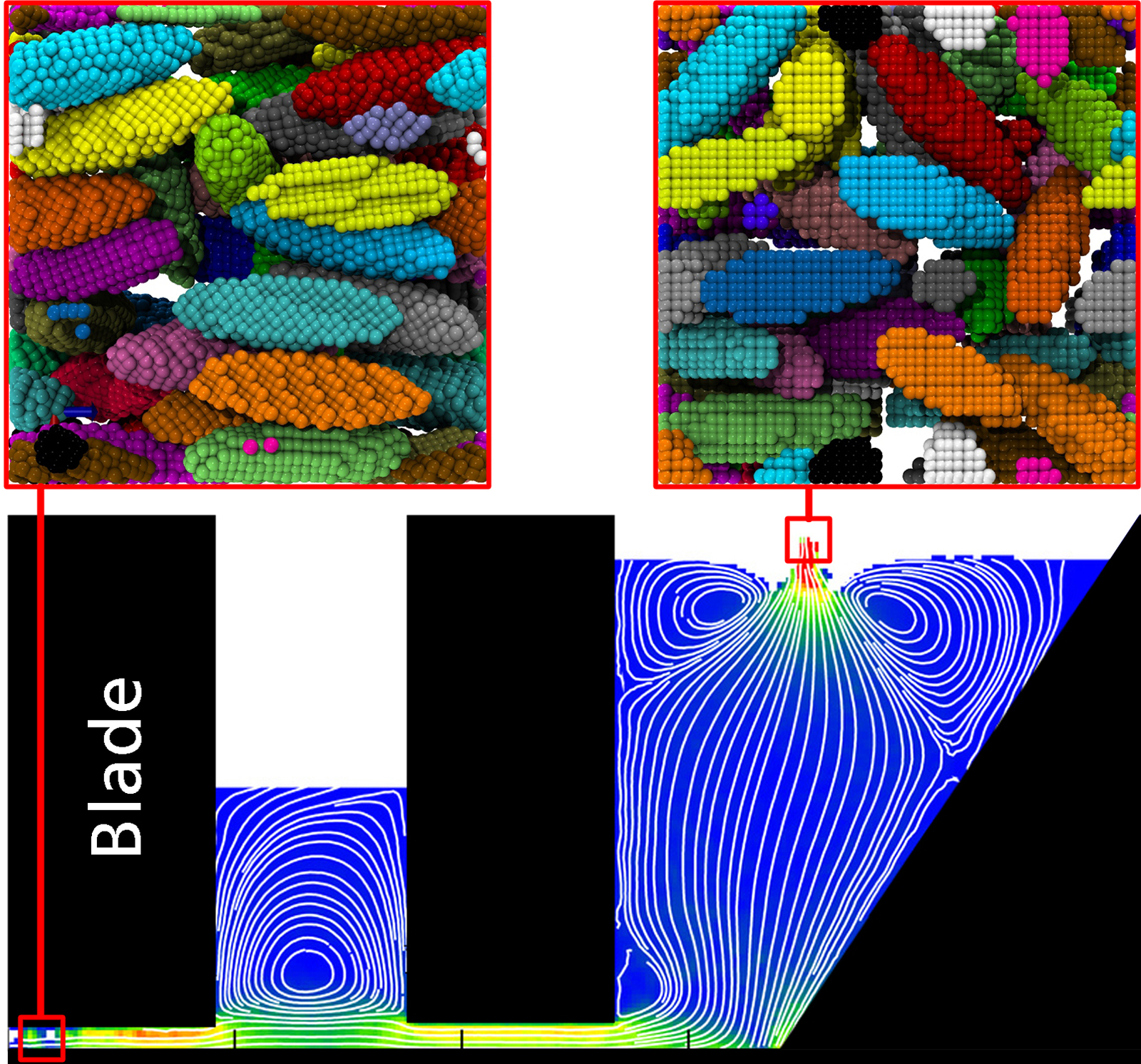Precisely simulating the production of ceramic tape
Manufacturers of ceramic tape currently have to rely on their own experience when it comes to configuring the tape properties. But now a new combination of macroscopic and microscopic simulation is facilitating this process by predicting how the slurry will flow through the machine and determining the alignment of the ceramic particles.

Mention “ceramic” and people typically think of products such as cups, dental implants and washbasins. Few people know that this material is also used in automotive exhaust and temperature sensors, where it is installed in the form of ceramic tape. In this case, the ceramic material serves as a substrate for electrical circuits which are exposed to extremely high temperatures. Porous ceramic tapes are also used in filter systems, for example to strain water, milk, beer and wine in the food industry. The key to the success of these applications is making sure that the tape has exactly the right properties when it is produced. Currently, however, manufacturers can learn how to get the properties they want only by experience, because their costly production facilities typically run around the clock. There’s simply no time to run comprehensive test batches through the machine, and the results from small lab trials cannot be scaled up without uncertainties creeping in. Adjusting ceramic tape properties is therefore a matter of trial and error with many unknown factors.
Researchers at the Fraunhofer Institute for Mechanics of Materials IWM in Freiburg have now come up with a new combination of simulation methods that significantly reduces the number of unknown factors in this process. Using computer simulations, they can now determine what happens in ceramic tape casting processes on both a macroscopic and microscopic level. From the macroscopic perspective, the researchers can calculate how the liquid ceramic, or slurry, moves through the machine. On a microscopic level, they can analyze how the micrometer-scale ceramic particles are aligned in the slurry and, subsequently, in the tape itself. No other simulation method in Europe uses this unique combination of techniques. “Our SimPARTIX® software allows us to take a multi-scale approach to simulating the tape casting process and shows us exactly what effect individual parameters have on the properties of the tape,” says Pit Polfer, a scientist at IWM. Manufacturers can use this information to optimize process control, minimize waste and improve the quality of their products.
So how is ceramic tape actually produced? A ceramic powder with a range of particle sizes and shapes is mixed with solvents and additives to form a free-flowing casting slurry. This is then poured into the slurry chamber. The slurry exits the bottom of the chamber and flows onto a conveyor belt that runs underneath. A doctor blade – a kind of scraper positioned at the gap between the blade and the belt – ensures that the ceramic slurry forms a flat layer of the required thickness. The result is a smooth layer of slurry which is then dried.
Macroscopic and microscopic simulation
Researchers use macroscopic simulation to determine how the ceramic slurry flows through the system. This is important because the geometry of the system is one of the factors that affects the properties of the finished tape. If the slurry spends too long in “dead spaces” within the casting chamber, it begins to degrade. If this slurry does eventually end up in the tape, it can compromise quality – which ultimately means more waste. The simulation shows manufacturers how the casting chamber’s geometry affects the slurry flow. Where does the liquid ceramic get stuck? How does the flow pattern change when you change the geometry of the doctor blade? Simulating these changes allows ceramic manufacturers to try out promising casting chamber geometries in a virtual environment first, thus sidestepping the high cost of testing experimental doctor blades on real production lines.
Along with this macroscopic simulation, the researchers also determine the slurry’s properties on a microscopic level – and it’s this approach that makes the combination so unique. For example, they investigate what impact individual ceramic particles have on each other and how they are aligned in space. Running the calculations for all the slurry in this way would be far too complex, so instead the researchers pick out different drops of liquid in the material. How do these droplets make their way through the system? And how are the ceramic particles aligned in these droplets? “We can then extrapolate these calculations to infer the behavior of the ceramic slurry as a whole,” says Polfer. That makes it possible to adjust the particle alignment and size gradients in the tape, offering a more targeted way of producing ceramic tape for specific applications.